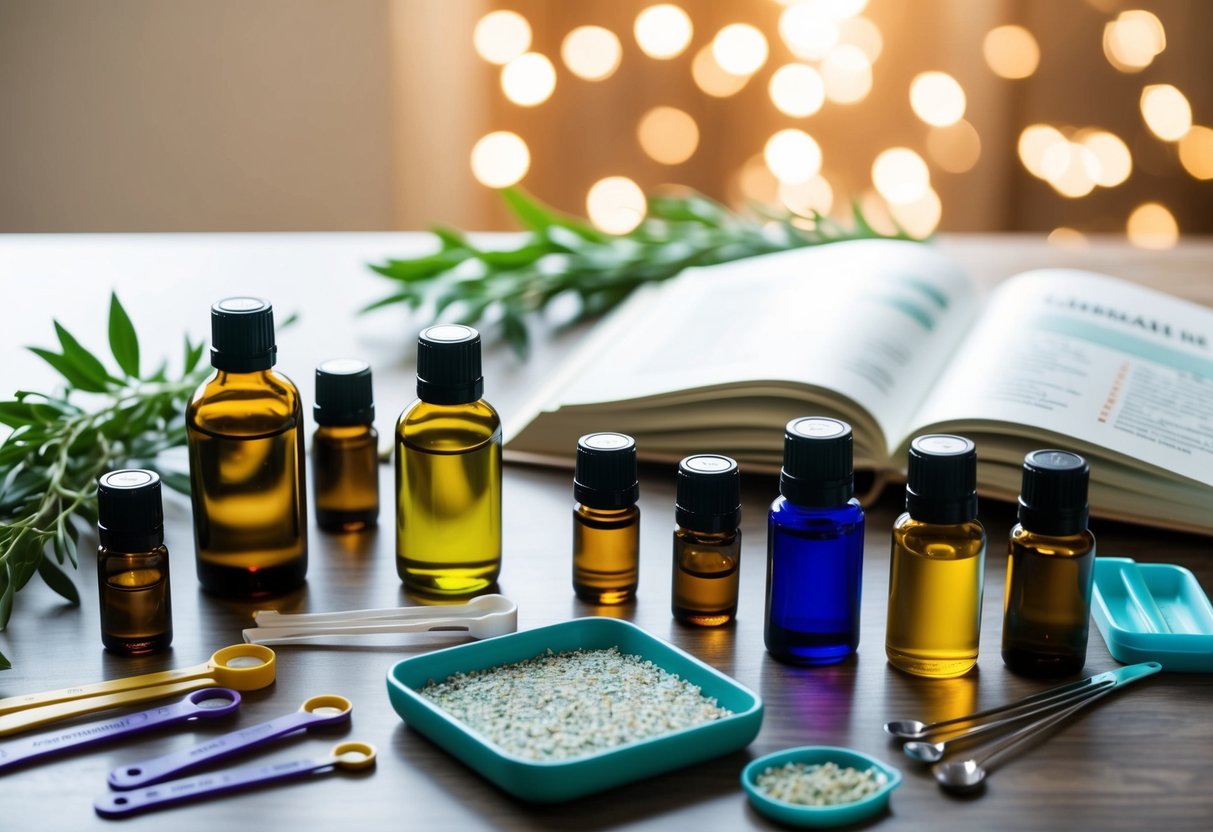DIY Aromatherapy: Create Your Own Relaxing Essential Oil Blends at Home
Creating Aromatic Blends
Crafting aromatic blends enhances the sensory experience of aromatherapy by combining essential oils to achieve a balanced scent. Success in this art requires knowledge of blending techniques, an understanding of notes and accords, and tried-and-true recipes.
Blending Techniques
Blending essential oils requires both an artistic touch and a methodical approach. A common starting point is the “3-3-3” rule—mix three drops of a top note, three drops of a middle note, and three drops of a base note to form a balanced scent. This technique ensures that the aroma unfolds in layers, adding depth to the blend. It’s crucial to start with small amounts to better control the outcome.
Experimentation is key, and keeping a blending journal helps track previously successful combinations. Essential oil blends can be customized to individual preferences, offering the flexibility to create something truly personal. Safety should be a priority, as certain essential oils can be potent and require dilution with a carrier oil.
Understanding Notes and Accords
Creating effective aromatherapy blends involves comprehending the roles of top, middle, and base notes. Top notes are the first impression but tend to evaporate quickly. Common top notes include citrus oils like lemon and bergamot. Middle notes add body and balance, with options like lavender and rosemary fitting well.
Base notes are grounding and help anchor the blend, lingering longest on the skin. Oils such as patchouli, cedarwood, and sandalwood make excellent base notes. An accord is a blend of notes that harmonize, forming a unique character. The goal of blending essential oils is to create a seamless transition from one note to another, making each accord a signature scent.
Essential Oil Blend Recipes
Essential oil recipes provide a practical guide for those new to blending. For relaxation, combine four drops of lavender, three drops of bergamot, and two drops of sandalwood. A refreshing blend might include three drops of peppermint, three drops of lemon, and two drops of eucalyptus. These combinations can invigorate the senses and promote well-being.
Another popular recipe is for stress relief, which often combines chamomile, clary sage, and cedarwood. Keeping blends in dark glass bottles preserves the integrity of the oils. These tried-and-tested recipes serve as a foundation, indicating the limitless potential for personalization in crafting one’s signature scent.
Safety and Best Practices

Aromatherapy offers numerous benefits, but proper application and handling are essential for an enjoyable experience. Adhering to dilution guidelines, being aware of contraindications and allergies, and ensuring correct storage and handling can prevent negative effects and enhance the therapeutic experience.
Dilution Guidelines
Essential oils are potent and should never be applied directly to the skin without dilution. Using a carrier oil like coconut, jojoba, or sweet almond oil can help safely disperse the essential oil. Typically, a 1-2% dilution is recommended for adults, meaning 1-2 drops of essential oil per teaspoon of carrier oil.
For children, elderly individuals, or those with sensitive skin, a lower dilution of 0.5-1% is advisable. In some instances, such as baths, even more dilution might be necessary to prevent skin irritation. Always perform a patch test by applying the diluted oil to a small area of skin to check for any adverse reactions.
Contraindications and Allergies
Before using any essential oil blend, it’s crucial to be aware of potential contraindications and allergies. Some oils may not be suitable for pregnant women, children, or people with certain medical conditions. For instance, oils like peppermint and eucalyptus are often not recommended for young children due to respiratory sensitivity.
Individuals with a known allergy to a specific plant or its derivatives should avoid using related essential oils. A sensitivity test is recommended: apply a small amount of the diluted oil to the inner wrist and monitor for any irritation over 24 hours. If any adverse reactions occur, discontinue use immediately and seek medical advice if necessary.
Storage and Handling
Proper storage and handling extend the shelf life and efficacy of essential oils. Oils should be kept in dark glass bottles to protect them from light and heat, which can degrade their quality. Store them in a cool, dry place, away from direct sunlight and fluctuating temperatures.
Tightly sealing the bottles is important to prevent oxidation and evaporation. Always handle the oils with clean hands or tools to maintain their purity and avoid contamination. Regularly check for changes in smell, consistency, or color, which might indicate that an oil has expired and should be replaced.



